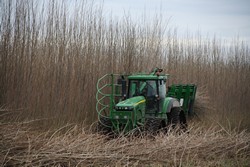Bioenergy from woody biomass to tackle greenhouse gas emissions
The use of bioenergy is increasingly seen as a promising strategy to mitigate greenhouse gas emissions. The feasibility of this renewable energy alternative needs to be examined in terms of its energy efficiency and its potential to effectively mitigate greenhouse gas emissions. The EU-funded POPFULL (System analysis of a bio-energy plantation: Full greenhouse gas balance and energy accounting) initiative aimed to find out if bioenergy from woody biomass is energy efficient and can successfully mitigate greenhouse gases. To find out, the research group monitored all energy inputs and outputs, as well as the entire greenhouse gas balance. These were compared with electricity from non-renewable sources. Project members studied a commercial biomass plantation and bioenergy production plant in Belgium to understand the system better. The researchers wanted to find out if bioenergy would help reduce greenhouse gas emissions. They used a meteorological station to monitor five principal greenhouse gases between the plantation and the atmosphere. They found that the plantation absorbed more carbon dioxide from the atmosphere than the plants produced, but this was not true for other greenhouse gases. The results showed that bioenergy has potential for combating greenhouse gas emissions; overall the greenhouse gas emissions were 80% less than with non-renewable sources. However, the results also showed the restrictions of bioenergy and highlighted the need to mitigate them before it can be widely used. POPFULL also investigated whether harnessing energy from woody biomass is economically profitable. It found that the cost of producing bioenergy was five times higher than that of non-renewable energy, which made it economically non-viable. However, the research group found that bioenergy production was highly energy efficient, producing eight times the energy that was put in. Watch the project video here(opens in new window) and a time-lapse film here(opens in new window).







